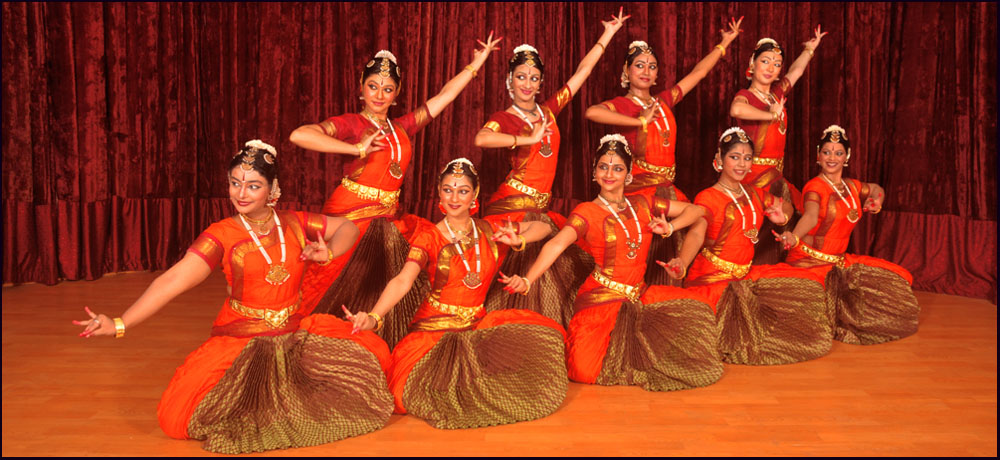

Saturday, 6th
October 2012

Bharatanatyam
- Saroja Vaidyanathan's group (Delhi)
| |
Originating
in Tamil Nadu, Bharatanatyam is one of the oldest and most popular
dance forms of India. Originating in Tamil Nadu and obtained from
the earlier Dasiattam – the dance of the devadasi –
it was nurtured in the temples and courts of southern India. Subsequently,
four brothers known as the Tanjore Quartet codified it as a performing
art in the 19th century. Their musical compositions form the bulk
of Bharatanatyam repertoire even today. The devadasis and nattuvanars,
the male gurus, were the sole repository of Bharatanatyam until
the early 20th century. During the British rule the dance fell into
disrepute and was banned in the temples. The revival of the dance
during the 1930s by pioneers, such as E. Krishna Iyer and Rukmini
Devi Arundale, set the tone for Bharatanatyam as we know it today.
One of India’s prominent
Bharatanatyam exponents, Saroja Vaidyanathan is acknowledged as
an adept dancer, guru and choreographer and author. She started
learning at age seven from the accomplished Guru Lalitha of Saraswati
Gana Nilayam, Chennai. She is the third- generation disciple of
the famous Guru Kattumannar Tanjavur Muthukumaran Pillai. She
has received worldwide acclaim for her dance recitals and repertoire
and been teaching Bharatanatyam for the past four decades in the
ancient Guru-Shishya tradition. Her innovative choreography has
not only yielded several enthralling ballets based on mythology
and social themes, it has also attracted a lot of young talent
to the dance form. Her institute, Ganesa Natyalaya, in New Delhi,
boasts of students from both India and abroad. Travelled widely
in India and abroad, Saroja Vaidyanathan’s recent works
include a Bharatanatyam segment for XIX Commonwealth Games Opening
Ceremony and compositions on Tagore’s poems as part of the
poet’s 150th anniversary celebrations. |













